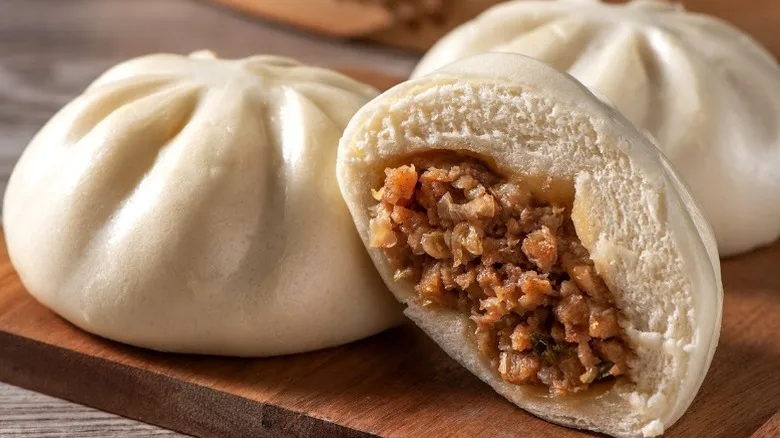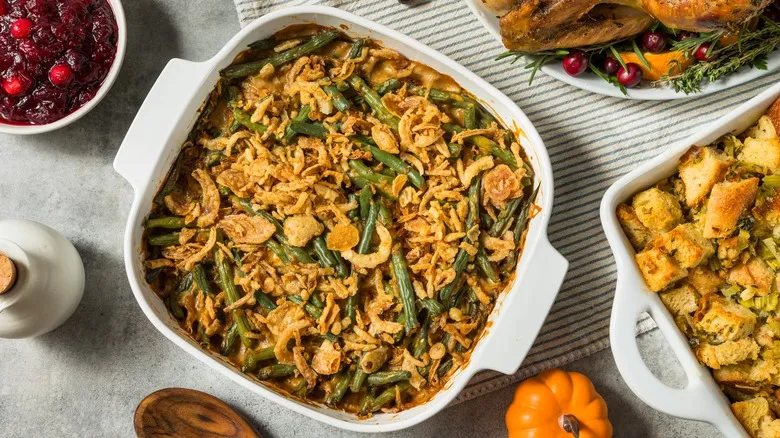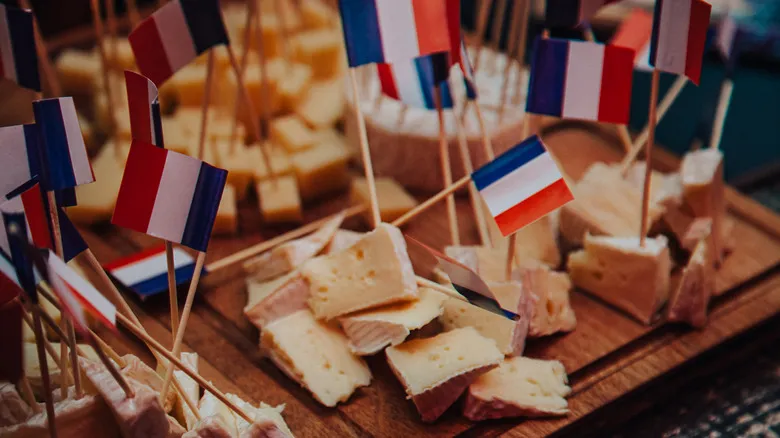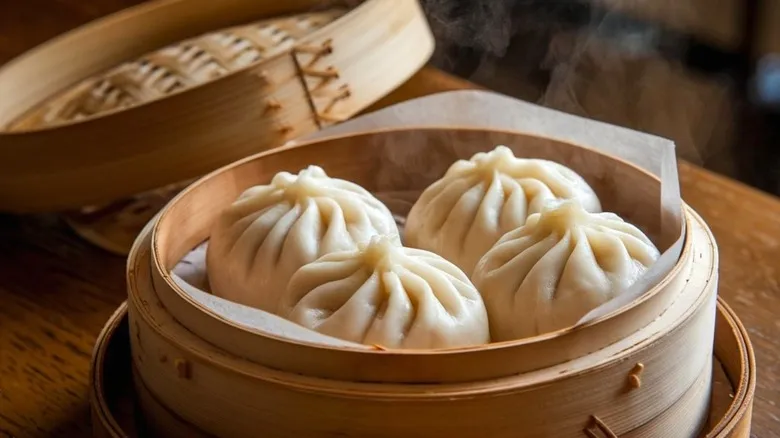Culinary differences between steamed buns and dumplings

Baozi are thick, steamed buns shaped like a round or teardrop, although sometimes the filling is wrapped in the dough like a hotdog. They are roughly the size of a person's palm and have a color that ranges from opaque white to tan. The dough includes yeast, along with milk and sugar, which contribute to baozi's distinctive sweetness and density. Char siu bao, in particular, highlights this flavor and texture with its savory barbecue pork filling. This dish is perfect for enjoying during dim sum, especially at breakfast or lunch.
Jiaozi feature semi-opaque dumpling skins that can withstand steaming, pan-frying, and boiling. Typically folded into a semi-circle and crimped at the edges, they can take on various shapes as long as they enclose the filling. The filling options are diverse, with pork, cabbage, green onion, and ginger being popular choices. These characteristics make jiaozi an iconic dish, inspiring Japan to create gyoza, which evolved from the potsticker dumpling. Jiaozi have become a staple of Lunar New Year celebrations, symbolizing wealth and new beginnings, but they are delicious enough to enjoy throughout the year.
Dumplings vs steamed buns in Chinese folklore

Historical accounts indicate that jiaozi originated before steamed buns, tracing back to the Han dynasty (206 B.C. to 220 A.D.) in China. According to legend, Zhang Zhongjing, a renowned physician, created the first jiaozi recipe to assist villagers suffering from frostbite. He encased meat and medicinal herbs in a doughy wrapper to provide warmth and nourishment to those in need. The villagers likely found them delicious and continued to prepare them over the years. Archaeological discoveries have even uncovered jiaozi in burial sites from several centuries later.
The fascinating tale of baozi begins during the Three Kingdoms period (220 B.C. to 280 A.D.). It is said that military strategist Zhuge Liang and his troops faced a treacherous river, where the only means of crossing involved a human sacrifice. Locals had previously thrown severed heads into the water to appease the river spirit for safe passage, but Zhuge Liang devised a clever alternative: he created steamed buns that resembled heads instead. The river god was pleased with this tasty offering and permitted the army to cross safely. Initially called mantou, meaning "barbarian's head," the dish eventually became known as baozi.
Recommended

The All-American History Of Green Bean Casserole

Yes, The Very First McDonald's Was A Barbecue Joint

Once Upon A Time, McDonald's Sold A Shockingly Affordable Lobster Roll

We Can Thank France For Introducing Us To An Iconic Cheesy Snack
Next up

